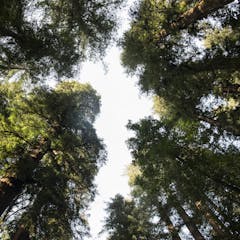
Articles on Carbon storage
Displaying 1 - 20 of 58 articles

Taking more carbon dioxide out of the atmosphere by stashing it in the ocean seems like a good idea, but it could backfire if tiny marine animals called zooplankton get extra hungry.

Underwater rivers ferry large volumes of seaweed from shallow seas into the deep, where its carbon is stored naturally

When it comes to storing carbon, alpine peatlands are powerhouses. But feral horse grazing and trampling tips the carbon balance in the other direction. We need to protect and restore our peatlands.

Planting millions of trees in natural grassland is largely ineffective in the battle against global warming because it adds little or no additional carbon storage.

Their incredible resilience means they are becoming part of the UK landscape.

Sometimes when taking these actions, however, carbon storage is prioritised at the expense of biodiversity. But that need not be the case.

How many years you reuse a fake holiday tree matters. So does what happens to a live tree when you’ve packed up the ornaments.

A group of agricultural and soil scientists has serious concerns about the way credits are awarded for soil carbon sequestration in Australia.

Tracking both the amount of carbon and the time that it remains stored is key to unlocking the potential of nature-based carbon storage as a climate mitigation strategy.

We want good news on climate change. But whales storing enough carbon needs more evidence.

Russia has vast natural resources and is involved in many conservation efforts. Its diplomatic isolation as a result of the war in Ukraine is making it harder to protect many wild species and places.

Brazilian President-elect Luiz Inácio Lula da Silva says he will end land clearance in Brazil’s Amazon region. But powerful forces profit from rainforest destruction.

The Midwest had a lot of trees, but just a few species were responsible for the bulk of the carbon storage.

Our new analysis suggests the vast majority of carbon credits granted for regrowing native forests either has not occurred, or would have occurred anyway.

Labor has promised a 43% cut in Australia’s emissions by 2030 and a high-integrity carbon credit market is vital to reaching this goal.

More carbon dioxide in the air doesn’t necessarily mean more growth for trees, and the increasing risk of wildfires and drought has major consequences, as an interactive map shows.

Directing public funds to native forest logging is bad for the economy, the climate and biodiversity, and will increase bushfire risk.

New research shows that coast redwood trees have a surprising adaptation that helps them thrive in both wet and dry environments.

Canada’s greenhouse gas emissions decreased by only one per cent between 2005 and 2019. A new climate plan charts the path to deep cuts in carbon emissions in only eight years.

Planting trees and preventing deforestation can store carbon in nature, but the effect may only be temporary. If we also eliminate emissions from fossil fuels, even this temporary effect is important.
